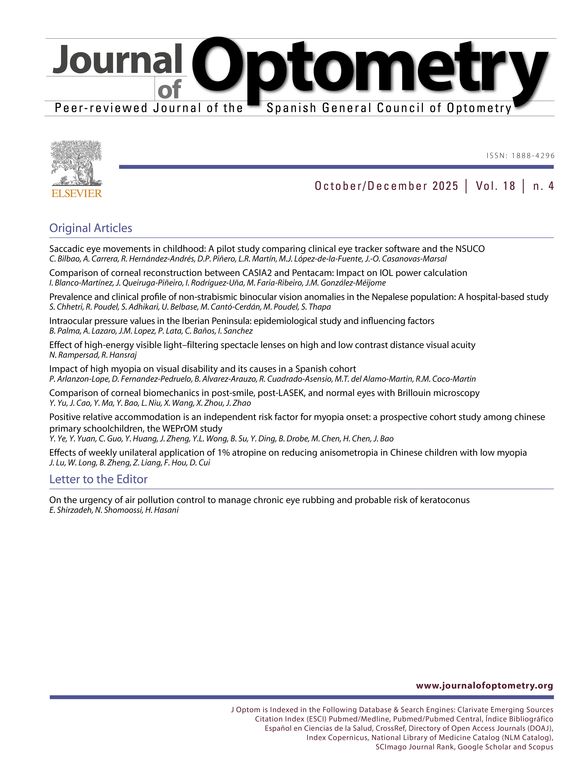We thank Suraj Kumar Chaurasiya for his comments on our study.1 The Bigaussian fitting was chosen as it characterizes refractive error distributions in a way that allows isolating the statistical properties of the emmetropized subgroup of the population (i.e., those where emmetropization went well) from those of the dysregulated subgroup (i.e., those with a disrupted refractive development, such as myopes). This simplifies the refractive continuum, while simultaneously accounting for all intermediate refractive states as both subgroups are wide, overlapping groups (see Fig. 1 of the paper). The Bigaussian fits are also highly robust, so the minor amounts of refractive astigmatism in the studied population will only have led to a slight myopic shift while maintaining the overall shape of the distribution. Similarly, the asymmetries between left and right eyes will be very minor due to their strong correlations and would not noticeably alter the analysis.
While it is certainly true that both lifestyle and myopia prevalence have changed since the 1960′s or the early 2000′s, it is doubtful that these changes would have fundamentally altered either the principles of refractive development or its refractive target. Furthermore, it is important to note that the aim of this paper was not to determine the shape of the refractive error distribution, which would indeed have changed over time, but rather the location of the emmetropic peak as a proxy for the target refractive error. The choice of using a cycloplegic dataset for young adults ensured compatibility with the many studies in children, nearly all of which are performed under cycloplegia. But as there are almost no datasets in the literature with cycloplegic data for 20-40-year-old adults, only the data from the Tehran Eye Study and Sorsby's 1960 study2 were suited for this analysis. This, combined with the robust Bigaussian fits to isolate the emmetropic peak, should lead to comparable estimates of the refractive target across the different generations, ensuring the long-term relevance of the current analysis.
That being said, we concur with the letter's suggestion that that the collection of newer large, population-based studies would be useful to further elaborate the current findings.







